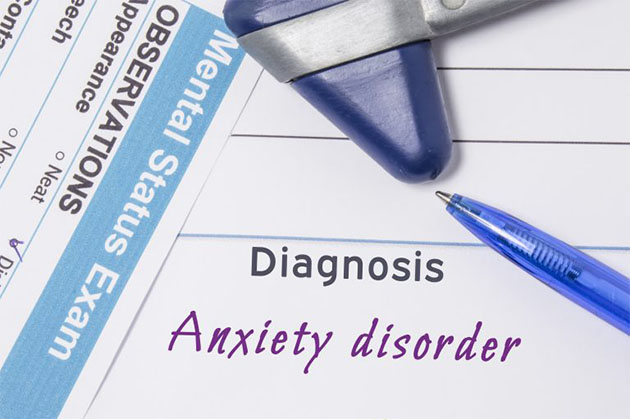Researchers have studied detailed effects of ‘pessimistic thinking’ which occurs in Angst und Depression
Mehr als 300 Millionen und 260 Millionen Menschen weltweit leiden an Depression und Angst respectively. Many times, a person suffers from both these conditions. Psychiatric problems like depression and Angst are devastating for patients and their families and they are extremely difficult to treat. Patients suffering from these neuropsychiatric disorders tend to experience a range of negative emotions and moods which makes them more pessimistic thereby making them focus more on the downside of any given situation. A specific personalised treatment can generally help patients alleviate some of the symptoms of these disorders. A type of psychotherapy – cognitive-behaviour therapy – is useful in curbing negative thoughts and emotions. Interpersonal therapy is also routinely used for better outcome for patients. Medications are also advised along with psychotherapy and sometimes interpersonal therapy.
Understanding the effects of depression and Angst Störungen
In einer Studie, die in Neuron scientists have studied how emotions are controlled by our brain. The main goal of researchers was to investigate if they could reproduce the effect on brain which happens to people suffering with depression, Angst or other similar disorders. These patients have a highly negative thinking and they tend to place more weight on negative aspects and outcomes of any particular situation.
The group of researchers from MIT pinpointed a region in the brain which is linked to emotional decision making and is responsible for generating pessimistic moods. This region is called ‘caudate nucleus’ and when it is stimulated it leads to generation of negative moods and /or decisions. This study has been conducted in animals for now. The animal was seen to focus more on the negative drawbacks of situations and not on the benefits whenever this region was stimulated in their brain. This pessimistic decision-making continued for at least 24 hours after the first stimulation was performed. The same group of researchers had previously identified a neural circuit which is crucial for a type of decision making which is called as ‘approach-avoidance conflict’. Making such choices requires a person to weigh the positive as well as negative aspects of a situation and this involves high levels of Angst and sometimes stress. This stress obviously then affects the decision-making process. Therefore, animals got influenced and they then chose a high-risk option under stress anticipating better payoffs.
Um dies zu bestätigen, boten die Forscher den Tieren eine Belohnung (Saft) zusammen mit einem unfreundlichen Reiz (ein großer Luftstoß in ihrem Gesicht) an und stimulierten dann ihren Nucleus caudatus mit einem geringen elektrischen Strom. In jedem Versuch wurde ein anderes Verhältnis von Preis und Schmerz verwendet, um zu beurteilen, ob die Tiere akzeptieren oder ablehnen. Dies ist ein Beispiel für eine Entscheidungsfindung, die eine Kosten-Nutzen-Analyse erfordert. Es war interessant zu sehen, dass die Tiere bei jeder Stimulation, wenn das Kosten-Nutzen-Verhältnis verzerrt, dh mehr Kosten und weniger Nutzen, anfingen, Kombinationen abzulehnen, die sie zuvor akzeptiert hatten. Dies dauerte bis zu 24 Stunden nach der Stimulation an. Dies zeigte, dass Tiere früher begannen, die Belohnung abzuwerten, die sie sich wünschten, und ihr Fokus verlagerte sich mehr auf den Kostenteil. Aufgrund ihrer Akzeptanz oder Ablehnung änderte sich auch ihre Gehirnaktivität im Nucleus caudatus, wenn sich ihr Entscheidungsmuster änderte. Daher kann diese Änderung der „Beta-Frequenz“ als Biomarker dienen, um zu sehen, ob die Tiere auf bestimmte Medikamente ansprechen.
Stimmungsregulierung
Researchers explained that some regions in the caudate nucleus are connected with the limbic system which is known to control a person’s mood. This system directs input to motor areas of the brain as well as the dopamine-producing regions. The authors concluded that maybe caudate nucleus was disrupting this dopamine activity. Therefore, even a slight change in our system could mean rapid change our behaviour. The findings in this study could help us understand depression and Angst in detail which can then assist us to develop new effective ways of therapy.
***
{Sie können das ursprüngliche Forschungspapier lesen, indem Sie auf den unten angegebenen DOI-Link in der Liste der zitierten Quellen klicken}
Quelle (n)
Amemori K et al 2018. Striatale Mikrostimulation induziert anhaltende und sich wiederholende negative Entscheidungen, die durch die striatale Beta-Band-Oszillation vorhergesagt werden. Neuron. https://doi.org/10.1016/j.neuron.2018.07.022
***






































